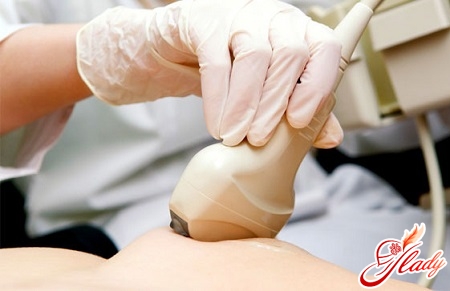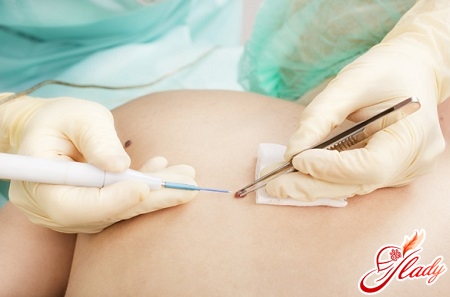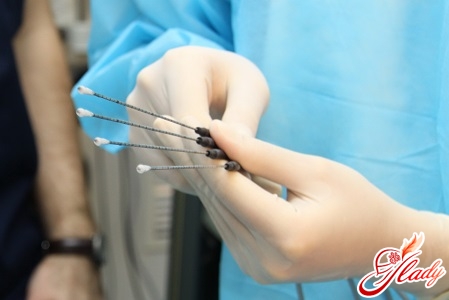
Fibroadenoma of the mammary gland is one of themthe most common pathologies in women today. This is a benign disease, but in some cases it can have very dangerous consequences. That is why it is extremely important to detect the development of the disease in time and pay due attention to it. Fibroadenoma of the breast, if noticed in time and not neglected, is treated conservatively, that is, non-surgically. If it is neglected, it is removed by surgical intervention, which helps to prevent serious consequences and forget about the problem once and for all.
What is fibroadenoma?
Fibroadenoma is a benign tumora tumor that develops in the mammary gland and is one of the varieties of nodular mastopathy. It is a dense, painless, rounded node that is not connected to the skin and is mobile. Its diameter can vary greatly: from 0.2 mm to 7 cm. Women aged 20-30 are susceptible to the disease. As a rule, they themselves discover this formation in the breast when they conduct a self-examination of the mammary glands. If you notice any compaction in the breast or any other uncharacteristic symptoms appear: the breast hurts, swells, the mammary gland increases in size, there is discharge from the nipples, etc. - be sure to consult a doctor, since all of these symptoms may indicate a pathology of the mammary glands. In this case, either one symptom or several may appear. The sooner you consult a doctor and detect the disease, the easier and without consequences it will be to get rid of it. Fibroadenoma can be diagnosed by a gynecologist or mammologist during a routine examination. The doctor may also refer you for an ultrasound or a puncture biopsy to finally confirm the diagnosis. In addition, a biopsy is necessary to determine the nature of the tumor: whether it is benign or malignant. Many patients who have been diagnosed with a breast tumor wonder what could have caused the disease. There may be several reasons for the development of fibroadenoma. The most common of them are:
- hormonal disbalance;
- increased level of estrogens (under their influence, the tumor increases in size);
- nervous tension and stress;
- cysts in the ovaries.
Therefore, fibroadenoma treatment is carried out in parallel with the elimination of the cause that led to the development of the tumor. There are several types of fibroadenomas:
- simple type
This type of formation is characterized by uniformity of structure and clear boundaries. It does not cause the risk of developing breast cancer. This type is the most common.
- complex type
These tumors are much less common and canprovoke the development of breast cancer. Like simple-type formations, these tumors also have a clear outline, but their structure is heterogeneous. Complex-type fibroadenomas contain many seals and cysts, papillomas, and hyperplasias of various types.
- leaf-shaped (phylloid) fibroadenoma.The most dangerous of all, since it is characterized by a very rapid increase in size and in 10% of cases - the transition to cancer. This formation is located between a benign and malignant tumor.
Depending on the type of education, the doctormay prescribe various treatment mechanisms. In any case, treatment should not be postponed in any way - do not underestimate the seriousness of the disease.
Treatment of breast fibroadenoma
Depending on what form of educationyou have been diagnosed, the doctor will prescribe the appropriate treatment. I would like to warn you right away that you should not self-medicate in any way. You should not believe in miraculous dietary supplements, tinctures, tablets, etc. - all these methods do not work against fibroadenoma. So, what treatment methods can the doctor offer you? If you have a small node (up to 1 cm), the doctor may offer you to monitor the tumor in dynamics. Monitoring the development of the tumor includes regular examinations by a mammologist and ultrasound of the mammary glands. This method helps to keep the growth of fibroadenoma under constant control. Although no drug can dissolve the tumor, there are cases when it dissolves on its own. If the node continues to grow, this will not go unnoticed, and in this case the doctor will offer to remove the fibroadenoma of the mammary gland by surgery. In addition, the following are also reasons for the indication of surgery:
- suspicion of oncology;
- large tumor sizes that look like a cosmetic defect;
- rapid growth of the tumor.
Surgical intervention can be performed in several ways:
- exudation, or tumor enucleation. If the doctor has no suspicion of oncology, he will suggest this option. The operation is that the patient is given a local anesthetic. In the mammary gland a notch is made a few centimeters long and the tumor is excised. Cosmetic defect after intervention is either not observed, or it is insignificant;
- sectoral resection is prescribed to those patients,who have a suspicion of cancer. In this case, the tumor is removed along with the tissues that surround it at a distance of 1-3 cm from the formation. The cosmetic defect after the intervention usually remains noticeable.

Inoperable treatment of breast fibroadenoma
If the tumor is in the early stages,you can do without surgery. That is why it is so important to regularly conduct self-examination of the mammary glands, so that in case of pathology, you can contact a specialist in time and get by with "little bloodshed". So, there are several methods that have proven themselves well in the fight against fibroadenoma. These include cryodestruction, high frequencies, mammotome biopsy. Let's consider each of the methods in more detail. Laser ablation is one of the methods of non-surgical removal of fibroadenoma. When using this method, the formation is removed using a laser device, the operation of which is controlled by ultrasound, which destroys the tumor. The cosmetic defect is limited to only a very thin scar: no stitches or changes in the shape of the breast occur. The advantage of this method is that it does not require anesthesia and observation of the patient in a hospital. Cryodestruction is another effective and very fast way to get rid of a tumor. In this case, it is simply frozen, and subsequently replaced by healthy tissue. The procedure is simple, takes less than half an hour, the cosmetic defect remains in the form of a thin scar. High frequencies are used for non-surgical removal of fibroadenoma of the mammary gland no less often than other methods. This method consists of making a 6-8 mm incision over the tumor. Then a surgical stick is inserted through this incision. During this time, the tissues are heated by a stream of high frequencies, and then they are cut with a scalpel. This makes it possible to do without unnecessary blood loss. As soon as the stick reaches its target - the tumor - the device captures it and removes it from the mammary gland. Mammotome biopsy can be used as a non-invasive method of removing a formation. The procedure is performed under local anesthesia and takes less than an hour. It consists of making a 6 mm incision over the tumor. Then, using ultrasound, a mammotome probe is inserted into the fibroadenoma, which sucks out those areas of tissue affected by the tumor. The cosmetic defect is limited to a small scar, and the procedure itself guarantees a quick recovery.
The Psychological Aspect
Almost all women are afraid of a lump in the breast.And when a woman learns the diagnosis, be it fibroadenoma or something more terrible, it sounds equally scary and hopeless to her. If you have been diagnosed with such a disease, do not give in to panic and despair. Trust your doctor and do everything as he tells you. If you have been diagnosed with fibroadenoma with an indication for surgical intervention, you must remember that attitude plays a very important role in this process. Do not be afraid and do not delay the operation, because the sooner you do it (naturally, as prescribed by the doctor), the better the result will be, and the sooner you will forget about the disease and continue a calm, happy and healthy life. Remember: breast fibroadenoma is not a death sentence and can be cured. In addition to fear and despair, many patients are worried about the intervention process itself and what the appearance of the breast will be after it. As medical practice shows, even during surgery, surgical intervention is so minimal that patients themselves later admit that they were much more afraid and worried than they actually should have been. The main thing is to remove the formation as soon as possible after it was discovered. Then everything will go much easier and better.









